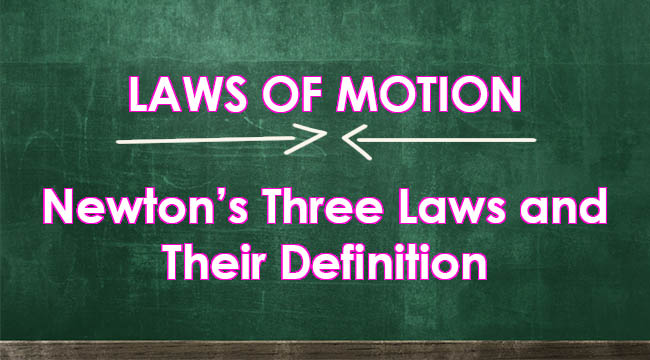LAWS OF MOTION: Newton’s Three Laws And Their Definition
LAWS OF MOTION – In this topic, we will discuss Sir Isaac Newton’s famous three laws of motion and each of their definition.

Before we begin, let us first know the man who discovered and made these three laws.
Sir Isaac Newton is an English mathematician, physicist, astronomer, theologian, and author, who is one of the well-known and influential scientists of all time. He was also known for the famous apple incident where an apple fell and “hit” on Newton’s head.
The Three Laws of Motion is one of his greatest contributions in the field of science. Here are the following three laws:
1. Law of Inertia | The First Law
Pioneered by Galileo, which states that:
“Every object in a state of uniform motion tends to remain in that state of motion unless an external force is applied to it.”
Basically it means if an object is moving, it will continue moving unless a force will stop the movement. The same goes if an object is not moving, unless you apply force, the object will not move.
2. Law of Acceleration | The Second Law
“An object with a certain velocity maintains that velocity unless a force acts on it to cause an acceleration”
Expressed by the scientific notation “f = ma”. Basically, it means that the applied force (f) is equal to the mass (m) of an object multiplied by its acceleration (a).
3. Conservation of momentum | The Third Law
“For every action there is an equal and opposite reaction.”
It means an object with a directed force will always be countered by another object of the opposite equal force, thus, an action-reaction situation. One example is pushing a wall. The action is you pushing the wall and in reaction, the wall pushes you in the opposite direction.
READ ALSO: SCIENTIFIC METHOD: Research In The Making And Its Six Steps
